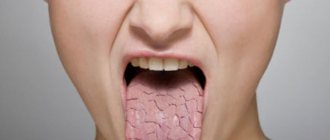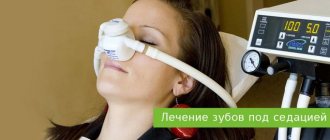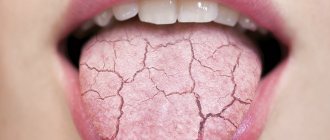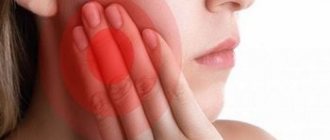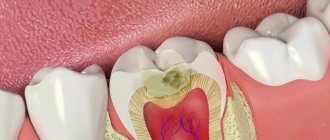- Outpatient department
Outpatient department » - Gastroenterology
Gastroenterology »
- About the direction
About the direction »
- Gastritis: symptoms, diagnosis and treatment
Gastritis is perhaps the most common disease of the gastrointestinal tract. Almost every second resident of our country suffers from it. That is why it is so important to know the first signs and symptoms of this disease in order to start treatment on time and not neglect your health.
Gastritis (from the Latin gastritis, from the ancient Greek γαστήρ (gaster) - “stomach” + -itis inflammatory or inflammatory-dystrophic changes in the mucous membrane) is a collective concept that is used to refer to various inflammatory and dystrophic changes in the gastric mucosa. Damage to the mucous membrane can be primary, considered as an independent disease, caused by poor nutrition, and secondary, caused by other infectious and non-infectious diseases or intoxication.
Types of gastritis
Acute gastritis
In modern medicine, there are several types of acute gastritis:
Simple (catarrhal) gastritis develops as a result of ingestion of stale food contaminated with pathogenic microbes (foodborne toxic infection), rotavirosis, allergies, or as a result of damage to the gastric mucosa by medications. With catarrhal gastritis, the surface layer of the mucous membrane is destroyed, which is quickly restored after the cessation of the irritating factor.
Corrosive (erosive) gastritis. This type of gastritis develops after concentrated acids or alkalis enter the stomach, which corrode the gastric mucosa. In this case, not only the superficial, but also the deep layers of the gastric mucosa are destroyed, so this form of the disease often gives rise to peptic ulcers or the formation of scars.
Phlegmonous gastritis is a purulent inflammation of the stomach that can develop as a result of penetration of a foreign object (for example, a fish bone) into the stomach wall with subsequent infection of this area. A distinctive feature of this type of gastritis is high fever and unbearable pain in the epigastric region. Phlegmonous gastritis requires immediate surgical intervention, as it can develop into peritonitis (extensive inflammation of the abdominal organs) and be fatal.
Fibrinous gastritis. It occurs very rarely against the background of sepsis (blood poisoning).
With proper treatment, acute gastritis (depending on the form) lasts up to 5 - 7 days, but complete recovery of the stomach occurs much later.
Often acute gastritis can become chronic.
Chronic gastritis
Chronic gastritis can develop as a consequence of acute gastritis or as an independent disease. Its danger lies in the fact that it can occur for a long time without showing any symptoms.
In the development of the disease, as a rule, there are periods of exacerbation and remission. During periods of exacerbation of chronic gastritis, short-term attacks of pain, discomfort in the upper abdomen, a feeling of heaviness, nausea after eating, and heartburn may appear, which indicates a dysfunction of the natural “valves” of the stomach and the reflux of acidic stomach contents into the esophagus.
A characteristic feature of chronic gastritis is the gradual growth of connective tissue in the gastric mucosa, replacing the cells that produce gastric juice (atrophy of the gastric mucosa). Chronic gastritis is often accompanied by a decrease in the production of gastric juice and acid (hypoacid gastritis).
Helicobacter pylori infection, which parasitizes the stomach, disrupts the renewal processes of the mucous membrane; thus, when old cells die, new ones cannot be formed. This leads to gradual degradation of the gastric mucosa with loss of function of the glands that produce gastric juice.
What is hypotension?
The term arterial hypotension (hypotension) defines a decrease in blood pressure. This is not a separate disease, but a syndrome that develops as a result of exposure to various provoking factors or against the background of diseases. A decrease in the indicator leads to a decrease in the volume and speed of blood flow in peripheral tissues. First of all, the cells of the nervous system, which are very sensitive to energy and oxygen starvation, are affected.
Low blood pressure - causes
Arterial hypotension develops due to exposure to a large number of pathological or physiological causes. The most common ones include:
- Poisoning of the body
– ingestion of various toxins from the outside with food, inhaled air, or intoxication due to the development of an infectious process.
- Violation of the regulatory influence of nervous system structures
on arterial vessels, leading to a sharp decrease in the tone of their walls - cerebral stroke, organic changes, infectious processes in the structures of the central nervous system, previous traumatic brain injuries, functional disorders of various origins.
- Dilatation of arteries against the background of decreased tone of the whole body
, which occurs against the background of physical and mental fatigue, lack of sleep, poor nutrition, hypovitaminosis (hypovitaminosis is an insufficient supply of one or more vitamins to the body).
- Decrease in circulating blood volume due to blood loss
(internal or external hemorrhage) or dehydration (loss of fluid due to uncontrollable diarrhea, vomiting, insufficient water intake).
- Severe allergic reactions
, accompanied by a pronounced decrease in arterial tone - anaphylactic shock.
- Changes in hormone levels in the blood
, which have a regulating effect on arterial tone, heart rate, blood pressure and other hemodynamic indicators - adrenaline, hormones of the adrenal cortex, pituitary gland influence the course of a large number of physiological processes in the body.
- Redistribution of fluid in the body
with a transition from the vascular bed to the intercellular substance of tissues, which leads to a decrease in the volume of circulating blood with arterial hypotension.
- Weakening of the contractile function of the heart
, provoked by pathological processes in the myocardium - infarction, myocardiopathy, myocarditis.
- Violation of the rhythm and frequency of heart contractions
, caused by various pathological factors and leading to a decrease in blood pressure.
A decrease in the level of systemic blood pressure is a consequence of pathological processes in other organs, in particular with diabetes mellitus, hepatitis, and anemia. Physiological arterial hypotension develops during the period of adaptation of the human body to a reduced concentration of oxygen in the inhaled air (stay in high mountain areas). Causes of low blood pressure in women include the effects of hormonal changes during menstruation, early pregnancy, and menopause (age-related decline in reproductive function).
Low blood pressure - symptoms?
Arterial hypotension is accompanied by a violation of the functional state of various organs and systems, which develops against the background of energy and oxygen starvation. Symptoms of low blood pressure include the following:
- General weakness
– a constant symptom of hypotension, the severity of which depends on the degree of decrease in blood pressure.
- Dizziness
– the result of oxygen starvation of neurocytes.
- Memory impairment, decreased mental performance
– low blood pressure affects a person’s higher nervous activity; signs usually appear with prolonged moderate hypotension, as well as against the background of the development of anemia.
- Paleness of the skin and visible mucous membranes
– the sign appears in cases where arterial hypotension develops sharply and is accompanied by a decrease in circulating blood volume (after bleeding).
- Headache
, which is predominantly localized in the temples, crown and can have varying severity.
With severe hypotension, a person loses consciousness, which is associated with oxygen starvation of the cerebral cortex. If systolic pressure is below 70 mm Hg. Art. acute renal failure develops, decompensation of the functions of all organs, which becomes the cause of death.
To understand why a particular patient has low blood pressure, a doctor (general practitioner, family doctor, cardiologist) must prescribe an additional objective examination. It includes various techniques, namely clinical blood tests, urine tests, ECG, X-rays, computed tomography, magnetic resonance imaging. Based on a thorough and reliable diagnosis, the correct treatment is prescribed.
Causes of gastritis
The main causes of gastritis are:
- poor nutrition;
- hasty eating and poorly chewed food or dry food;
- eating food that is too hot or too cold;
- eating savory foods (mostly spicy and highly salted);
- smoking;
- alcohol consumption;
- stress;
- infection with the microbe Helicobacter pylori;
- chewing gum on an empty stomach.
Causes
The causes of xerostomia include:
- medications (antibiotics, painkillers, antihistamines and antihypertensives, anticholinergics, sedatives and decongestants, muscle relaxants, antidepressants);
- age (insufficient saliva production in older people is caused by taking various medications, poor diet, and chronic diseases);
- obstructive sleep apnea syndrome;
- smoking, alcohol abuse, use of illegal substances;
- diseases: diabetes mellitus, hypothyroidism, oral candidiasis, stroke, Alzheimer's disease, Parkinson's disease, systemic lupus erythematosus, scleroderma, sarcoidosis, Sjögren's syndrome, rheumatoid arthritis, amyloidosis, HIV/AIDS;
- chemotherapy, radiation therapy (especially for head and neck tumors);
- damage to the facial nerve (trauma, surgery, Bell's palsy).
A dry mouth significantly increases the risk of tooth decay and other dental problems. Saliva helps prevent tooth decay by neutralizing acids produced by bacteria, washes away food particles, facilitates chewing and swallowing, and promotes digestion. Therefore, if xerostomia persists for a long time, it is necessary not only to eliminate its main cause, but also to make an appointment with a dentist to check the condition of the teeth and gums.
Depending on the cause, along with the manifestation of xerostomia, the following symptoms may be observed: dry and itchy eyes, dry nose, impaired sense of smell, cough, pain and stiffness in the joints, constipation, recurrent thrush (candidiasis) in women, general malaise, unexplained loss weight.
Symptoms of gastritis
So, how can you recognize that you have begun to develop gastritis? It is worth listening to your body and analyzing why pain bothers you, at what time it occurs and how often it happens.
Symptoms of gastritis:
- abdominal pain: sharp paroxysmal or constant painful;
- nausea is constant or intermittent, often occurring immediately after eating;
- heartburn;
- belching with a sour smell;
- repeated vomiting (in the case of acute gastritis, vomiting with blood is possible, since internal bleeding may open in the stomach);
- increased salivation;
- sometimes dry mouth;
- bowel dysfunction: constipation or diarrhea;
- from the whole body: severe general weakness, dizziness, headache, sweating, increased temperature, decreased blood pressure, increased heart rate - tachycardia;
- decreased appetite;
- unpleasant taste in the mouth;
- feeling of heaviness in the stomach after eating;
- bloating, rumbling in the stomach, flatulence;
- anemia, brittle and dry hair, split nails.
Dry mouth
Sign up for a consultation by phone
Or fill out the form online
Make an appointment An adult produces about one and a half liters of saliva per day on average. It would seem, why so much?
In fact, saliva has many functions.
Firstly, it protects the mucous membranes of the mouth and throat from drying out. Secondly, it protects teeth from caries: it washes away food debris and plaque; slows down the growth of pathogenic bacteria that destroy enamel and cause inflammation of soft tissues; neutralizes acids that form in or enter the mouth. Thirdly, saliva thins food, which makes it easier to swallow and promotes a better sense of taste. And fourthly, saliva contains the digestive enzyme amylase, which begins to digest carbohydrates already in the oral cavity.
The mucous membrane is dried out by breathing through the mouth and snoring - this is most strongly felt upon waking up by people with impaired nasal breathing (for example, with a runny nose) and decreased tone of the soft palate.
There are many reasons for dry mouth, let's look at some of them:
1. Smoking.
Smoking and chewing tobacco causes dry mouth, both due to direct oral contact with smoke and due to decreased saliva production under the influence of nicotine.
2. Excessive salt intake.
Addiction to salty foods also does not contribute to the production of saliva, and the inevitable consumption of large amounts of liquid with salt will sooner or later lead to hypertension. Eating more than 5-7 grams of salt per day is not recommended even for absolutely healthy people.
3. Dehydration.
Dry mouth after physical activity or exposure to a hot, dry climate simply means that the body has lost a lot of moisture and needs to be replenished.
4. Disease.
If dry mouth has been bothering you for a long time, it makes sense to see a doctor - perhaps this is a symptom (sometimes the only one!) of some disease. Most often, dry mouth is a symptom of diabetes.
Also, a decrease in saliva production is observed when the salivary glands are damaged - inflammation, tumor, etc. Dry mouth can also be a symptom of an autoimmune disease - Sjogren's syndrome.
5. Taking medications.
Hundreds of drugs that are used to treat gastrointestinal disorders, cardiovascular diseases, depression and other mental disorders, allergies, infections, malignant neoplasms and other conditions can dry out the oral mucosa.
If dry mouth continues for a long time or appears while taking medication, you should consult a doctor.
Diabetes mellitus is a pathological condition characterized by chronically elevated blood sugar levels, which develops as a result of the influence of hereditary and external factors, threatening the development of serious complications in the eyes, kidneys, blood vessels, and nervous system.
There are two types of diabetes:
- type 1 diabetes,
- type 2 diabetes.
Type I diabetes usually develops in young people whose body does not produce insulin due to damage or loss of beta cells in the pancreas. As a result, the body cannot use glucose and it accumulates in the blood. One of the first symptoms of the disease is dry mouth, thirst, and frequent urination, as the body tries to “flush out” the increasing amount of glucose. Over time, the kidneys can no longer cope with such a load, and abdominal pain, vomiting, and dehydration occur.
Type II diabetes usually develops in people over 40 years of age and who are overweight. They may have normal, low, or even high insulin levels and still have high blood glucose and diabetes. Obesity can contribute to insulin resistance, i.e. The body's cells cannot use insulin properly. In this case, glucose cannot completely penetrate the cells and accumulates in the blood. You can get answers to your questions or make an appointment by calling:
(495) 956-91-03
Benefits of the service
Convenient work schedule
We work until late in the evening to make it convenient for you to take care of your health after work
No queues
The patient registration system has been debugged over many years of work and works in such a way that you will be seen exactly at the chosen time
Cozy interior
It is important to us that patients feel comfortable within the walls of the clinic, and we have done everything to make you feel comfortable
Attention to the patient
At your service there are attentive staff who will answer any question and help you navigate
Diagnosis of gastritis
Today, the main way to determine gastritis is fibrogastroduodenoendoscopy or FGDS, which consists of studying the condition of the inner surface of the stomach using a probe, as well as a biopsy - removing a small fragment of tissue for examination.
FGDS makes it possible not to confuse gastritis and ulcer and to determine the type of disease: erosive or non-erosive.
Also, a gastroenterologist, to make a correct diagnosis, may prescribe the following tests:
- General blood analysis.
- Fecal occult blood test.
- Histological examination of a biopsy specimen of the gastric mucosa.
- Cytological examination of a biopsy specimen of the gastric mucosa.
- Two tests for the determination of H. pylori.
- Blood chemistry.
- General urine analysis.
Treatment of reactive pancreatitis in children
If symptoms of pancreatitis appear, you should immediately consult a doctor. Some forms of pancreatitis require intensive care in a hospital setting!
Diagnosis of the disease is carried out using a blood test (biochemistry) and ultrasound examination of the abdominal cavity. If the diagnosis is determined correctly, then the treatment of reactive pancreatitis in children has the same principles as the treatment of the acute form of the disease.
The treatment mechanism for reactive pancreatitis includes diet and complex drug therapy. These could be antibiotics, enzymes, antihistamines - the correct drug treatment regimen should be determined by a doctor.
Diet for gastritis
For gastritis with low acidity
Can:
- boiled lean meat: chicken, rabbit;
- meat broths;
- lean fish: pink salmon, hake, cod;
- vegetables in the form of puree or grated: carrots, potatoes, green peas, beets;
- ground fruits, compotes and jelly from apples, raspberries and strawberries;
- porridge (oatmeal, semolina, rice);
- low-fat cottage cheese, milk;
- only squeezed cabbage juice;
- alkaline mineral waters, for example Borjomi (1 glass an hour before meals).
It is forbidden:
- hot and spicy dishes;
- canned food;
- mustard;
- pepper;
- onion;
- hot sauces.
For gastritis with high acidity
Can:
- pureed vegetarian soups;
- dairy products;
- lean fish and boiled meat;
- scrambled eggs;
- porridge, jelly, jelly;
- vegetable purees;
- compotes from fresh (not sour) fruits;
- carrot juice;
- White bread.
It is forbidden:
- coffee and strong tea;
- meat broths;
- smoked meats;
- mustard;
- onion;
- garlic.
For all types of gastritis, split meals are very important - 5-6 times a day.
Gastritis (from the Latin gastritis, from the ancient Greek γαστήρ (gaster) - “stomach” + -itis inflammatory or inflammatory-dystrophic changes in the mucous membrane) is a collective concept used to refer to inflammatory and dystrophic changes in the gastric mucosa of different origins and course. Damage to the mucous membrane can be primary, considered as an independent disease (due to poor nutrition), and secondary, caused by other infectious and non-infectious diseases or intoxication.
Gastritis is perhaps the most common disease of the gastrointestinal tract. Almost every second resident of our country suffers from it.
If you are really looking for your doctor...
Xerostomia is dry mouth that occurs as a result of a decrease or complete cessation of salivation [10].
Patients suffering from xerostomia are bothered by burning and itching (“burning mouth syndrome”), impaired taste, difficulty speaking, swallowing food (especially dry food), wearing dentures, and frequent injury to the oral mucosa. In this regard, the need for fluid increases, especially during meals, and there is a need for frequent use of products that maintain oral moisture [7].
The main clinical signs associated with xerostomia and hypofunction of the salivary glands include: loss of luster of the oral mucosa and its atrophic changes, the appearance of fissures and lobules on the back of the tongue, and the development of angular cheilitis. Dysbiotic changes and relapses of candidiasis often occur. There is an increase in the intensity of dental caries, the appearance of carious cavities on surfaces that are usually resistant to damage.
The causes of xerostomia can be taking medications, radiation therapy (local and general irradiation), constant stress, old and senile age, and systemic diseases.
Often xerostomia is a consequence of the use of medications. Today, more than 400 drugs are known that have the ability to cause dryness and induce hypofunction of the salivary glands. Among them are anticholinergic, anorexigenic and antihistamines, antidepressants, psychotropic and antihypertensive drugs, diuretics, etc.
In commonly used dosages, these drugs do not damage the structure of the salivary glands; their effect is reversible: withdrawal of the drug leads to the disappearance of dry mouth [8].
When conducting radiation therapy in the head and neck area, according to a number of researchers [1], the rate of salivation at rest decreases by 50% 24 hours after receiving a dose of 2.25 Gy. During treatment (after 6 weeks) (dose of 60 Gy per field/fraction), the decrease in salivation already exceeds 75%. In most cases, decreased salivary gland function and associated xerostomia are irreversible. For prevention purposes, radiation oncologists recommend shielding the salivary glands from the full dose of radiation [1, 8].
Xerostomia and hypofunction of the salivary glands are closely associated with a number of systemic diseases such as rheumatoid conditions, hypertension, diabetes mellitus, cystofibrosis, some neurological conditions, and depression. The prototype of rheumatoid conditions is Sjogren's syndrome [3].
Sjogren's syndrome can be idiopathic (primary), or develop against the background of other rheumatic diseases, such as rheumatoid arthritis, systemic lupus erythematosus, systemic scleroderma. In its early stages, there may be slight changes in the rate of salivation. But as the disease progresses, the rate of salivation gradually decreases due to the slow destruction of the gland parenchyma by lymphoreticular cell infiltrate, irreversible degeneration of acinar cells and severe atrophy [3]. Xerostomia is also associated with a number of widespread disorders and diseases, which include hypertension and diabetes mellitus [9].
The prevalence of xerostomia in older people, according to various authors, ranges from 10 to 61%, and xerostomia is more common in women. It was found that the level of salivation from the parotid salivary glands practically does not change, which indicates their large secretory reserve. The rate of saliva secretion by the submandibular and minor salivary glands may decrease slightly. Drug therapy and systemic diseases mainly affect the function of the submandibular salivary gland [5, 10].
Currently, there are several methods for relieving xerostomia. Stimulating secretion is the optimal treatment method for patients who have preserved the functional activity of the salivary glands. Therapeutic techniques for stimulating secretion can be local or systemic. Chewing gum, mint, inert substances such as paraffin or sucking sour candies increase salivation. However, their effect is fleeting and requires frequent repetition. In some patients, substances such as citric acid cause irritation of the mucous membrane, and if used frequently, they can contribute to demineralization of the enamel. Sugar-containing secretagogues may increase the risk of developing caries. A more conservative approach, which is often effective in relieving complaints of dry mouth and dysphagia, is to recommend the use of plain water [2].
Bromhexidine, anetcol trithione and pilocarpine hydrochloride are used as pharmacological systemic stimulators of salivary gland function [4, 10]. Bromhexidine is a mucolytic agent and is used to treat chronic bronchitis, but according to some data, no positive changes from its use have been identified for dysfunction of the salivary glands [4]. Anetcola trithione (Sialor or Sulfarem) has been proposed for the treatment of salivary gland hypofunction caused by psychotropic drugs, radiation, and Sjögren's syndrome. The effectiveness of treatment, according to different studies, varies [4]. Pilocarpine hydrochloride is a parasympathomimetic. Pilocarpine is a potential stimulant of endocrine secretion. According to P. Fox (1987), 9 mg of pilocarpine three times a day is effective over a 6-month period of use in patients with hypofunction of the salivary glands caused by radiation and in patients with Sjogren's syndrome [4]. Greenspan and Daniels (1987) studied patients with xerostomia after irradiation. 9 of 12 patients had subjective and objective improvement after treatment with pilocarpine. Epstein and Schubert (1987) studied the combination of pilocarpine and anetcol trithione. They hypothesized that the combination of these drugs would have a synergistic effect in stimulating salivary flow [4, 10]. Pilocarpine has proven to be the most effective systemic secretagogue currently available. However, there are some limitations to its use in cases of hypofunction of the salivary glands. As noted above, pilocarpine will only be effective if a sufficient amount of functioning salivary gland tissue is preserved [10].
In this regard, further clinical studies are needed to determine optimal dosages, administration regimens and clarify the side effects of pilocarpine [4]. The development of long-acting formulations would be an ideal solution for long-term treatment of patients with dry mouth.
Treatment of patients with xerostomia should be comprehensive and include additional means to moisturize the oral mucosa. Today, artificial saliva preparations are relatively rare on the pharmaceutical market. Most of them are presented in the form of gels and aerosols [6].
Dentists who supervise patients with xerostomia are advised to pay attention to the line of oral moisturizing products from the Spanish company Laboratorios KIN SA. This is a moisturizing toothpaste and a spray for moisturizing the oral cavity KIN HIDRAT, which is similar in composition to natural saliva. Toothpaste contains sodium fluoride (1450 ppm F). Panthenol (1.00 g) and vitamin E (0.20 g) have a protective and antioxidant effect. Thanks to the combination of its components, KIN HIDRAT moisturizing toothpaste prevents the development of caries and promotes the remineralization of tooth enamel. The paste should be prescribed for long-term daily use in patients with xerostomia, especially postmenopausal women, elderly patients taking medications such as antidepressants, antihypertensives, diuretics, etc., patients undergoing radiation and chemotherapy, and patients suffering from Sjögren's syndrome .
The mineral composition of KIN HIDRAT mouth moisturizing spray is similar to natural saliva.
KIN HIDRAT oral moisturizing spray relieves discomfort caused by dry oral mucosa by restoring moisture balance. Its daily use as dryness occurs prevents the occurrence of oral diseases associated with decreased salivation.
The inclusion of KIN HIDRAT preparations in complex therapy for dry oral mucosa helps to significantly improve the well-being of patients with xerostomia and reduce the risk of dental diseases.
